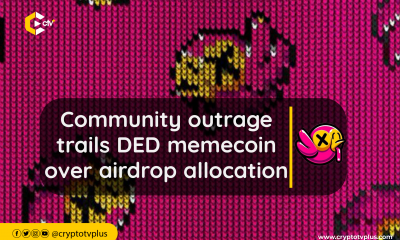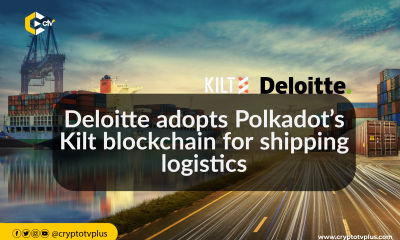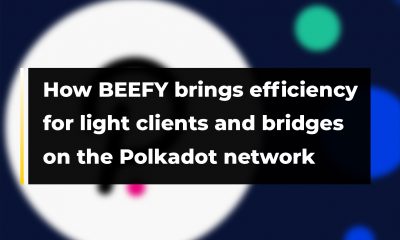News
Centrifuge’s journey to becoming a multi-chain liquidity distribution protocol

Following a series of improvements on the protocol, Centrifuge, a blockchain-based platform, has successfully transformed its protocol into a cross-consensus application protocol, opening up new possibilities for users and liquidity distribution.
This strategic move, aimed at bridging the gap between the Ethereum and Polkadot ecosystems, was announced at the Sub0 2023 by Frederick Gartenmeister, Technical Project Manager at Centrifuge.
Centrifuge is a decentralized finance (DeFi) protocol that aims to bring real-world assets into the blockchain ecosystem through tokenization. It is a platform for on-chain credit that connects investors and borrowers with bankless liquidity.
It allows users to exchange business documents privately and securely while relying on a public blockchain for proof of authenticity and the tokenization of these documents.
In addition, the protocol enables the tokenization, underwriting, and securitization of all kinds of documents such as invoices, mortgages, and other contracts to exchange their data in a provable, unalterable way, and finally provide financing.
Frederick started by speaking on the company’s journey to adapt to the multi-chain landscape. He talked about why it is important to address the unique challenges posed by different consensus systems, acknowledging that some chains excel in liquidity while others are better suited for computational tasks.
One of the primary motivations for this transformation was the realization that a significant portion of liquidity and users reside within the Ethereum ecosystem.
To make their platform more accessible and user-friendly, Centrifuge needed to connect these users to their system seamlessly.
Therefore, Centrifuge had to devise a means to manage cross-chain interaction between Ethereum and their chain, ensuring that the sequence of execution remains coherent.
Another vital aspect mentioned by Frederick is the essence of leveraging the capabilities provided by Polkadot’s substrate chain.
While Centrifuge offered high performance and low execution costs, the protocol needed enhancements to facilitate users from other domains and make it more adaptable for multi-chain interactions.
Adjustments made on Centrifuge
Furthermore, he added that Centrifuge was initially designed with the assumption that all users would interact solely with their chain.
However, as different chains approached Centrifuge, it introduced complexities like having multiple types of accounts, bridges with delays, and handling more complex tokens.
To address these challenges, Centrifuge has implemented several key strategies including adding Ethereum Virtual Machine (EVM) capabilities to their chain; custom code execution for issuers who want to customize certain processes without requiring runtime upgrades; and integration of Axler for bridging.
Axler is a blockchain dedicated to bridging, offering efficient tools and gas handling for cross-chain transactions. This choice provided a reliable and secure bridge between Ethereum and Centrifuge.
He also said that the Centrifuge introduced a set of state messages to facilitate communication between different chains.
These messages convey when other consensus systems need to adapt to changes, ensuring a harmonious multi-chain interaction.
However, Frederick also noted some challenges during their journey. Managing fees and account derivation across different chains proved to be complex.
Additionally, handling variable-length byte arrays in transactions required special consideration, as not all chains support this feature seamlessly.
Variable-length byte arrays in transactions refer to the ability to include arbitrary-length byte arrays in a transaction on a blockchain.
This feature is used to encode nested arrays of binary data, such as transaction data, and is commonly used in Ethereum
Centrifuge aims to improve these aspects in collaboration with the broader blockchain community to enhance the overall user experience.
It foresees a future where multiple bridging options with varying levels of security and cost efficiency provide users with the flexibility to choose the best option for their needs.
Read also; How T3rn is transforming the world of Web3 Oracles

























1 Comment